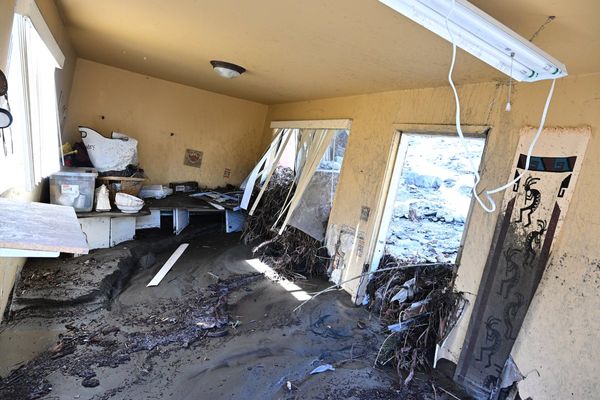
The Rivesaltes Camp Memorial in the south of France will hold solemn commemorations on Friday as part of Europe's day of remembrance for the massacres of Roma people during World War II.
Now in ruins, the former military base in the Pyrenees was converted into an internment camp for "undesirable foreigners" in the early 1940s under the Vichy regime, which collaborated with France's German occupiers.
It was also used as a transit camp for Jews on their way to Nazi death camps in Poland, and, after the war, as a "rehabilitation" camp for the harkis – Algerian supporters of France who were forced to flee Algeria during and after its war of independence.
Of some 17,500 people held at Rivesaltes, nearly 1,400 Roma were interned there between 1941-42.
For European Roma Holocaust Memorial Day on 2 August, a ceremony, songs and talks at the site will commemorate the fate of hundreds of thousands of Roma people who were rounded up and massacred by the Nazis.
{{ scope.legend }}
© {{ scope.credits }}Campaign of destruction
The Roma people, made up of several different communities including Romani, Sinti and Manouche, came to Europe centuries ago from the Indian subcontinent.
Their nomadic traditions incited suspicion in places where they would temporarily settle. Nicknamed "travellers", "gypsies" or "gitanes", they faced a long history of persecution throughout Europe.
Roma migrants in France: life on the move
During WWII, Nazi authorities subjected Roma to a deliberate campaign of arbitrary internment, sterilisation, forced labour, deportation and mass murder.
Tens of thousands of Roma were seized in Germany, German-occupied territories and other regions that collaborated with Berlin, including Vichy France.

In France, at least 7,000 Roma were interned, many of whom were were deported to territories controlled by Nazi Germany.
Rivesaltes was one of the transit camps from which Roma were sent to their final destiny.
They died in the killing factories at Auschwitz-Birkenau, Chelmno, Belzec, Sobibor and Treblinka, and in concentration camps within Germany proper.
Struggle for remembrance
In total, between 220,000 and 500,000 Roma people were killed by the Nazis and their collaborators.
For many years, the genocide was overlooked. In 2012, a monument to the victims was unveiled in the centre of Berlin. And in 2015, the European Parliament established 2 August as an official day of remembrance.

The date refers to the night of 2-3 August 1944, when Nazi guards raided the barracks where Roma and Sinti people were held at Auschwitz-Birkenau following a revolt within the camp.
Some 3,000 men, women and children were murdered in the gas chambers. Their bodies were burned in pits.
Opening the archives
Rivesaltes is currently hosting an exhibition dedicated to the persecution of Roma people, "The Families' Camp", which runs until February 2025.
Two of the three curators have Roma heritage: Jérôme "Gigi" Bonin from the French Nomads Memorial and William Acker from the National Association of Travellers.
"We absolutely wanted to collaborate with today's travellers and with the descendants of the Romani, Sinti, and Manouche communities who are accompanying us," explains the director of the Rivesaltes memorial, Céline Sala-Pons.
Behind her stands one of the photos displayed in the exhibition: a so-called anthropologist measuring the head of a Roma woman, as part of the pseudo-science adopted by the Nazis that aimed at proving the supposed superiority of the Aryan race.

The exhibition also includes work by contemporary Roma artists alongside the paintings of Louis Burkler, who was interned at the camp as a child along with his family.
Through archives and personal testimonies, it aims to shed light on decades of marginalisation of Roma people perpetuated by authorities in both France and Germany.
Unprecedented Marseille expo turns spotlight on Roma culture







